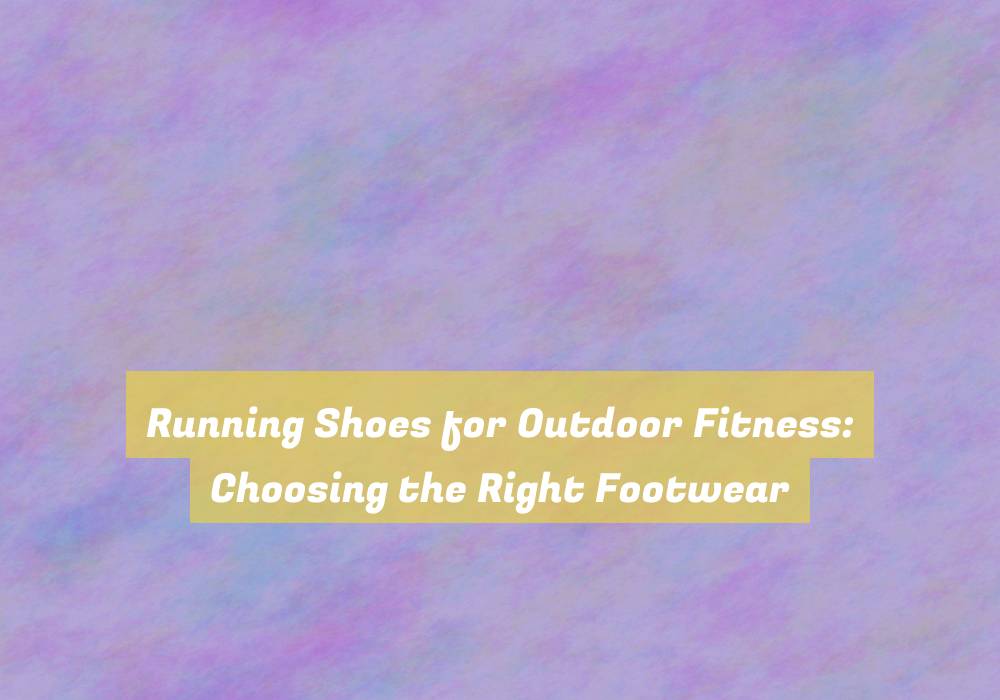Running Shoes for Outdoor Fitness: Choosing the Right Footwear
You step outside, ready to hit the trails and soak in the natural beauty around you.
But before you take off, have you considered if your running shoes are the right fit for outdoor fitness?
The right footwear can make a significant difference in your performance and comfort. From navigating uneven terrain to providing proper support for your feet, choosing the right running shoes for outdoor fitness requires careful consideration.
So, what should you be looking for in your next pair of running shoes?
Importance of Proper Foot Support
When choosing running shoes for outdoor fitness, itG??s crucial to prioritize proper foot support to prevent injuries and enhance performance.
Proper foot support is essential because it helps distribute the impact of your foot striking the ground, reducing the stress on your joints and muscles. Without adequate support, you may be at risk of developing conditions such as plantar fasciitis, shin splints, or stress fractures.
By selecting running shoes with proper arch support and cushioning, you can minimize the risk of these injuries and maintain a more efficient stride.
Additionally, proper foot support can also enhance your overall performance. With the right shoes, you can achieve better stability and balance, allowing you to push off the ground more effectively with each stride. This can lead to improved speed and endurance, helping you reach your fitness goals more efficiently.
Therefore, when shopping for running shoes, pay close attention to the level of support they offer to ensure you can maximize both your safety and performance during outdoor fitness activities.
Consideration for Outdoor Terrain
Consider the varying outdoor terrains youG??ll be running on to determine the most suitable running shoe for your fitness activities. If you plan to run on smooth, paved surfaces, look for running shoes with adequate cushioning and support to absorb the impact. These shoes typically have a more lightweight and flexible design, allowing for a smooth stride on even surfaces.
For trails and uneven terrains, opt for trail running shoes with a more aggressive tread pattern to provide better traction and stability on dirt, gravel, and rocky paths. These shoes often feature a protective layer to shield your feet from sharp rocks and debris.
If you anticipate running on a mix of terrains, consider versatile cross-training shoes that offer a balance of cushioning, support, and traction.
Features for Enhanced Performance
To enhance your performance during outdoor fitness activities, look for running shoes equipped with features such as responsive cushioning, lightweight materials, and breathable construction.
Responsive cushioning provides energy return with each stride, reducing fatigue and enhancing your overall endurance. Look for shoes that offer a balance of cushioning and responsiveness to support your feet during high-impact activities.
Lightweight materials in the shoe construction help to minimize fatigue and allow for quicker, more agile movements. They reduce the overall weight on your feet and contribute to a more efficient running or training experience.
Additionally, breathable construction in running shoes promotes airflow, keeping your feet cool and comfortable during intense workouts. This feature helps to prevent overheating and excessive sweating, reducing the risk of blisters and discomfort.
Choosing the Right Fit
Ensure your running shoes fit comfortably snug without being too tight, providing support and flexibility for your outdoor fitness activities. When selecting the right fit, consider the length, width, and overall shape of your foot. Your toes should have enough room to wiggle without feeling cramped, and the shoe should securely hold your heel without causing any discomfort. Remember that your feet can swell during exercise, so itG??s essential to leave a little extra space to accommodate this.
Additionally, try on shoes later in the day when your feet are at their largest to ensure a proper fit.
Pay attention to how the shoe feels as you move. Walk or jog around the store to test for any slipping, rubbing, or pressure points. Your heel should remain stable and not lift out of the shoe, while the midsole should provide a supportive cushioning to absorb impact. A good fit will prevent blisters, black toenails, and other discomforts that can hinder your outdoor workouts.
Conclusion
When youG??re looking for the perfect running shoes for outdoor fitness, make sure to prioritize proper foot support and consider the terrain youG??ll be running on.
Look for features that will enhance your performance and donG??t forget to choose the right fit for maximum comfort and effectiveness.
With the right footwear, youG??ll be able to take on any outdoor fitness challenge with confidence and ease.

